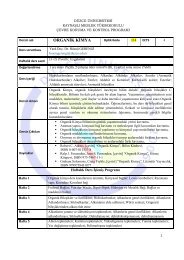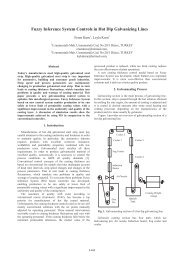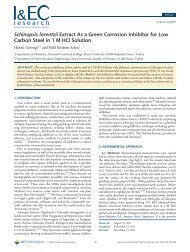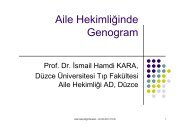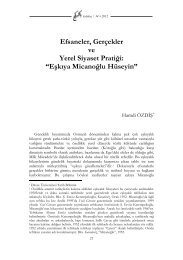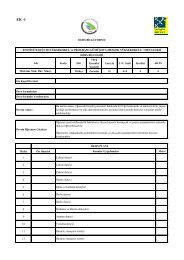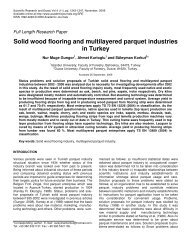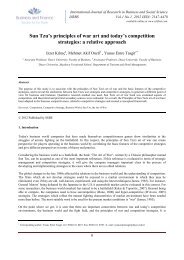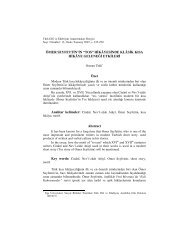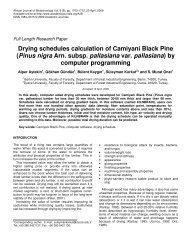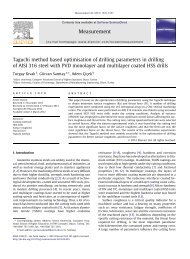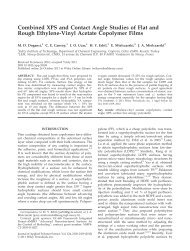Weight optimization of a dry type core form transformer by using ...
Weight optimization of a dry type core form transformer by using ...
Weight optimization of a dry type core form transformer by using ...
You also want an ePaper? Increase the reach of your titles
YUMPU automatically turns print PDFs into web optimized ePapers that Google loves.
1064 H. Demir / EEST Part A: Energy Science and Research 29 (2012) 1063-1072<br />
trans<strong>form</strong>er which is designed previously [2]. There are two imported parameters affecting the<br />
weight <strong>of</strong> a trans<strong>form</strong>er. These are the iron part and the copper part <strong>of</strong> a trans<strong>form</strong>er [1]. In section<br />
2, PSO method is explained. In section 3, the solutions <strong>of</strong> the problem are explained. In<br />
section 3.1 the solution <strong>of</strong> the problem is done <strong>by</strong> classical method and in section 3.2 the<br />
solution <strong>of</strong> the problem is done <strong>by</strong> PSO. The total weight <strong>of</strong> a three phase <strong>core</strong> <strong>form</strong> <strong>dry</strong> <strong>type</strong><br />
trans<strong>form</strong>er is obtained as a function <strong>of</strong> the total iron and the total copper weights <strong>of</strong> the<br />
trans<strong>form</strong>er. This function has been accepted as the goal function. The constraints are<br />
added to the fitness function as the penalty function to constrain fitness function values. The<br />
efficiency (η) and (Ls/a) has been taken as the constraints. By <strong>using</strong> the given equations the<br />
fitness function has been obtained as a function <strong>of</strong> current density and trans<strong>form</strong>er iron cross<br />
section convenience value. The minimum values for this function were computed <strong>using</strong> the<br />
PSO method and finally the results are given in the conclusion part.<br />
2. Partial swarm <strong>optimization</strong> (PSO)<br />
PSO is a population-based <strong>optimization</strong> algorithm developed for the first time <strong>by</strong> [16]. It<br />
was inspired <strong>by</strong> the moving school <strong>of</strong> fish and swarm inspection. Basically, PSO is an<br />
algorithm based on swarm intelligence. It is similar to the computational techniques based on<br />
development such as genetic algorithms (GA). While PSO is searching for the optimum in the<br />
search space, it uses the population which holds the possible solutions for the function to be<br />
optimized [17]. Thus, each individual is called a particle. Particles make up the population<br />
called a swarm. In PSO, however, each member <strong>of</strong> the swarm has a variable speed which<br />
changes based on the conditions and determines its movement in the search space. In addition,<br />
each member has a memory holding the best spot previously visited. Each particle adjusts its<br />
position toward the best position in the swarm <strong>by</strong> taking the advantage <strong>of</strong> its previous<br />
experience. PSO is basically based on the fact that the positions <strong>of</strong> the particles in the swarm<br />
Fig. 1. The flow diagram for PSO.<br />
are brought closer to the best position in the swarm. The speed <strong>of</strong> “bringing closer” happens<br />
in a random fashion and in most cases the particles in the swarm find better positions in their<br />
new movements. This process continues until it gets to the goal.



